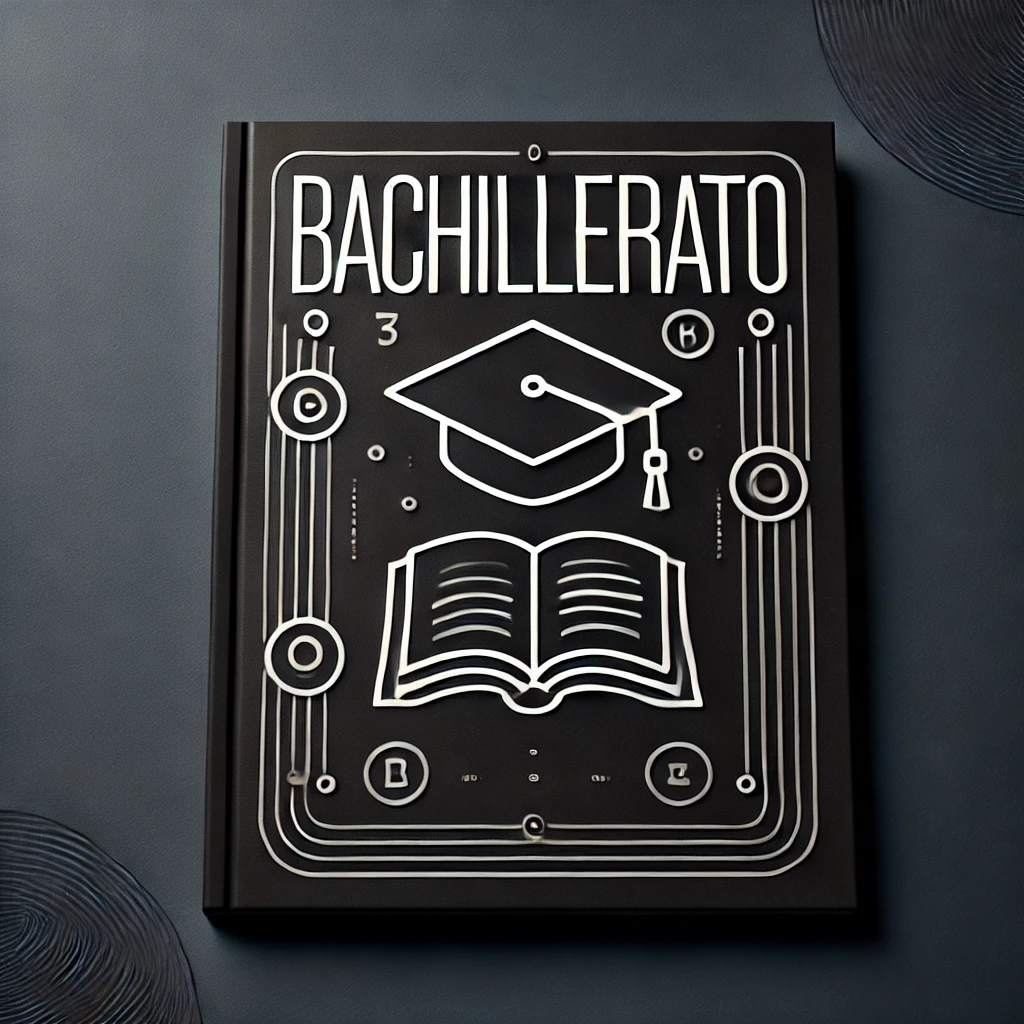Bachillerato

Introduction
Congratulations on taking the first step to understanding Bachillerato! Whether you’re a student navigating the Spanish education system, an educator, or someone interested in international education, this guide will provide you with a comprehensive understanding of what Bachillerato entails, its significance, and how it shapes the future of millions of young individuals across Spain and Latin America.
What is Bachillerato?
Bachillerato is an educational qualification prevalent in Spain and several Latin American countries, equivalent to high school completion in other parts of the world. Typically pursued after completing Educación Secundaria Obligatoria (ESO), Bachillerato serves as a bridge between compulsory education and higher education or vocational training. It emphasizes a well-rounded curriculum, including sciences, humanities, and arts, preparing students to tackle global challenges and excel in their chosen career paths.
Historical Background
To fully appreciate Bachillerato, it’s essential to understand its origins and evolution within the Spanish education system. The concept of Bachillerato has roots in the medieval European education system, where it denoted a student who had completed initial studies in a university. Over time, Bachillerato evolved to represent secondary education qualifications, aligning with modern educational needs and societal demands.
Structure of Bachillerato
Duration and Age Group
Bachillerato typically spans two academic years, catering to students aged between 16 to 18 years. This period is crucial for students to deepen their knowledge, explore specific academic interests, and prepare for the next steps in their educational journey.
Curricular Tracks
Bachillerato offers various tracks to cater to diverse interests and career aspirations:
- Sciences: Focuses on subjects like Biology, Chemistry, Physics, and Mathematics, preparing students for careers in scientific research, engineering, medicine, and more.
- Humanities: Emphasizes subjects such as History, Philosophy, Languages, and Social Sciences, ideal for those interested in careers in law, education, journalism, and the arts.
- Arts: Concentrates on visual arts, music, theater, and design, fostering creativity and preparing students for artistic professions or further studies in fine arts.
Importance of Bachillerato
Preparation for Higher Education
Completing Bachillerato is often a prerequisite for admission to universities and higher education institutions in Spain and many Latin American countries. It provides the necessary academic foundation and qualifications required for university entrance exams, such as the Pruebas de Acceso a la Universidad (PAAU).
Skill Development
Bachillerato promotes critical thinking, problem-solving, and analytical skills. Through a diverse curriculum, students develop the ability to approach complex issues, conduct research, and engage in informed discussions—skills essential for personal and professional growth.
5 Must-Know Facts About Bachillerato
Duration and Age Group: Bachillerato typically lasts for two academic years, usually for students aged 16 to 18 years old, providing them with both general education and specialized knowledge.
Different Curricular Tracks: There are different tracks within the Bachillerato program, including sciences, humanities, and arts, allowing students to focus on their areas of interest or future career paths.
University Admission Requirement: Successful completion of Bachillerato is often required for students who wish to attend university or pursue higher education opportunities.
Skill Enhancement: Bachillerato promotes critical thinking and problem-solving skills that are essential for addressing global challenges such as climate change and social inequality.
International Recognition: In many countries, the Bachillerato is recognized internationally and can facilitate students’ admission to universities outside their home country.
Bachillerato vs. Other Educational Qualifications
Understanding how Bachillerato compares to other secondary education qualifications globally can provide valuable insights into its unique features and benefits. Unlike some high school diplomas that may focus primarily on vocational training, Bachillerato offers a balanced curriculum that prepares students for both higher education and the workforce.
Admission to Universities: Pruebas de Acceso a la Universidad (PAAU)
Upon completing Bachillerato, students often undertake the Pruebas de Acceso a la Universidad (PAAU), standardized exams required for university admission in Spain. These exams assess students’ knowledge and readiness for higher education, ensuring they meet the academic standards necessary for university success.
Global Recognition and Opportunities
One of the significant advantages of Bachillerato is its international recognition. Many universities worldwide acknowledge the Bachillerato diploma, facilitating student mobility and access to global educational opportunities. This recognition allows students to pursue higher education abroad without significant credential barriers.
Challenges and Criticisms
While Bachillerato offers numerous benefits, it is not without challenges. Some criticisms include:
- Rigid Curriculum: The structured nature of Bachillerato may limit flexibility for students who wish to explore interdisciplinary studies.
- High Pressure: The emphasis on university admission can create significant stress for students, potentially impacting their mental health.
- Accessibility Issues: In some regions, access to quality Bachillerato programs may be limited, affecting educational equity.
Addressing these challenges is crucial for enhancing the effectiveness and inclusivity of the Bachillerato system.
Bachillerato in Different Countries
Spain
In Spain, Bachillerato follows Educación Secundaria Obligatoria (ESO) and is divided into various modalities corresponding to different curricular tracks. The Spanish government regulates the curriculum to ensure consistency and quality across the country.
Latin American Countries
Many Latin American countries have adopted the Bachillerato model, adapting it to their specific educational contexts. While the core principles remain similar, there may be variations in curriculum content, duration, and administrative structures to cater to local needs.
Promoting Equity in Education Through Bachillerato
Bachillerato plays a pivotal role in promoting educational equity by providing standardized qualifications accessible to diverse populations across Spanish-speaking countries. Its inclusive curriculum and emphasis on universal skills help bridge educational gaps between different socioeconomic groups, fostering long-term social mobility and empowerment.
Related Educational Terms
Educación Secundaria Obligatoria (ESO)
Educación Secundaria Obligatoria (ESO) is the compulsory secondary education stage in Spain that students complete before entering the Bachillerato program. ESO covers four academic years, typically for students aged 12 to 16, providing foundational education in various subjects.
Título de Bachiller
The Título de Bachiller is the diploma awarded to students who successfully complete the Bachillerato program. This qualification is essential for pursuing higher education and is recognized across various educational systems worldwide.
Pruebas de Acceso a la Universidad (PAAU)
Pruebas de Acceso a la Universidad (PAAU) are entrance exams that students take after completing Bachillerato to gain admission into universities in Spain. These exams assess students’ academic readiness and subject-specific knowledge required for university studies.
Conclusion
Bachillerato stands as a cornerstone of secondary education in Spain and several Latin American countries, providing students with the knowledge, skills, and qualifications necessary for higher education and professional success. Its comprehensive curriculum, emphasis on critical thinking, and international recognition make it a vital educational pathway for young individuals aspiring to make meaningful contributions to society and address global challenges.
Frequently Asked Questions (FAQs)
1. What is the main purpose of Bachillerato?
Bachillerato aims to provide students with a well-rounded education, preparing them for higher education or vocational training by offering both general and specialized knowledge across various disciplines.
2. How does Bachillerato differ from other high school diplomas?
Unlike some high school diplomas that may focus primarily on vocational training, Bachillerato offers a balanced curriculum that emphasizes both academic and practical skills, facilitating entry into higher education and diverse career paths.
3. Is Bachillerato recognized internationally?
Yes, Bachillerato is recognized in many countries around the world, allowing students to pursue higher education opportunities internationally without significant credential barriers.
4. What subjects are typically included in the Bachillerato curriculum?
The curriculum usually includes subjects from sciences, humanities, and arts, such as Biology, Chemistry, History, Philosophy, Languages, Mathematics, and Visual Arts.
5. What are the requirements to graduate from Bachillerato?
Students must successfully complete the required coursework in their chosen curricular track, pass all necessary examinations, and earn the Título de Bachiller diploma to graduate.
SEO Strategies for Your Bachillerato Blog Post
Keyword Optimization: Incorporate relevant keywords such as “Bachillerato,” “Spanish Education System,” “Título de Bachiller,” “Pruebas de Acceso a la Universidad,” and “Secondary Education Spain” throughout your content, especially in headings, subheadings, and the introduction.
Quality Content: Ensure your content is informative, well-researched, and provides value to your readers. Use the information provided in this guide to expand each section with detailed explanations, examples, and real-life applications.
Internal and External Links: Include internal links to other relevant blog posts on your website and external links to reputable sources, such as official education websites and academic studies, to enhance credibility and SEO ranking.
Mobile Optimization: Ensure your blog is mobile-friendly, as a significant portion of users access content via mobile devices. Use responsive design and optimize images for faster loading times.
Engaging Media: Incorporate images, infographics, and videos related to Bachillerato to make your post more engaging and shareable. Use alt text with relevant keywords for all media.
Readable Formatting: Use clear headings, bullet points, and short paragraphs to improve readability. This not only enhances user experience but also helps search engines understand your content structure.
Meta Descriptions and Titles: Craft compelling meta titles and descriptions using primary keywords to improve click-through rates from search engine results pages.
Social Media Integration: Promote your blog post on social media platforms to increase visibility and drive traffic to your website.
Regular Updates: Keep your content up-to-date with the latest information and trends in the education sector to maintain relevance and authority.
User Engagement: Encourage comments, questions, and discussions at the end of your blog post to increase user engagement and dwell time, positively impacting SEO.







